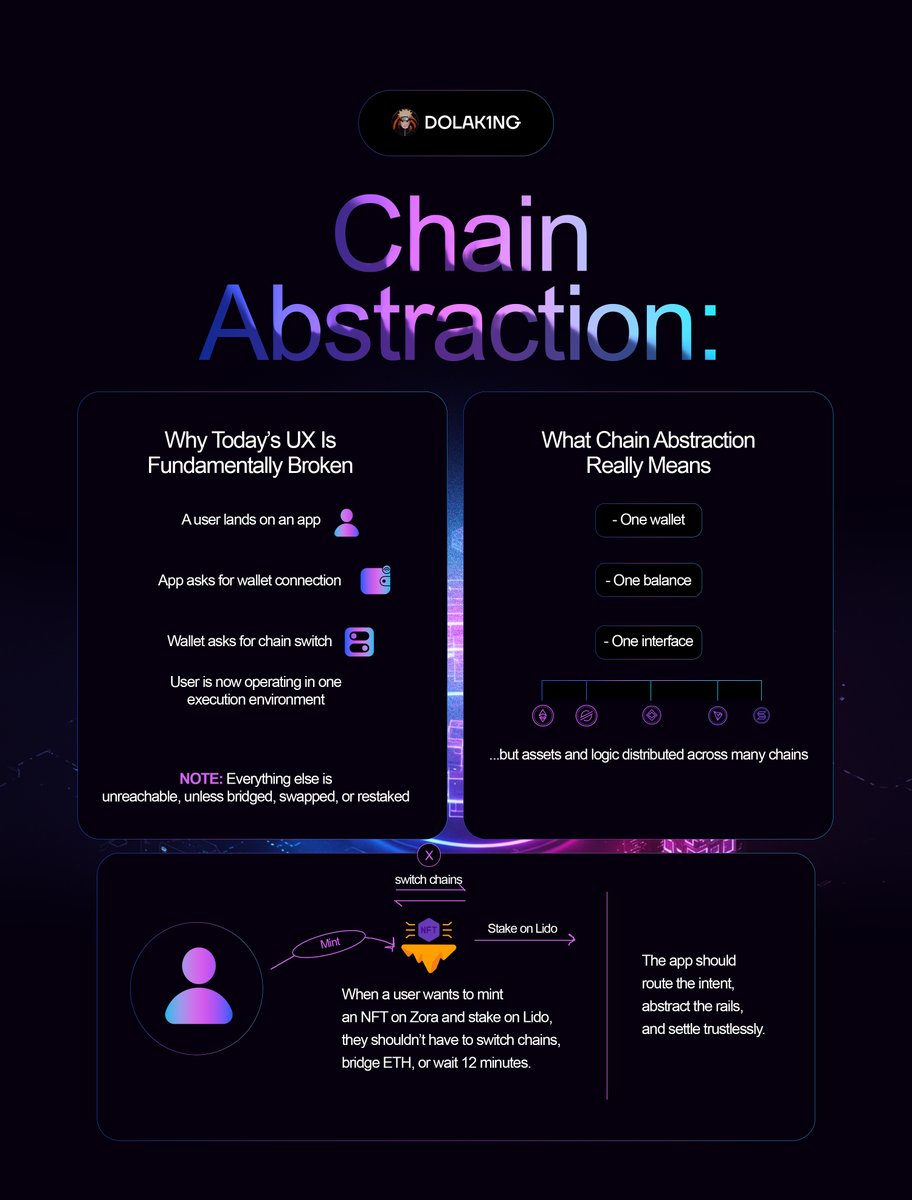Rollups scaled Ethereum.
But rollups didn’t scale users.
Each L2 today is siloed, a self-contained execution island.
To move assets, logic, or liquidity between them, we still bridge.
We still wait.
We still risk.
Chain abstraction asks a different question:
What if users didn’t have to know what chain they’re on at all?
Let’s unpack why that shift changes everything.
Why Today’s UX Is Fundamentally Broken
Here’s how crypto works today:
1. A user lands on an app
2. App asks for wallet connection
3. Wallet asks for chain switch
4. User is now operating in one execution environment (e.g., Arbitrum)
5. Everything else is unreachable, unless bridged, swapped, or restaked
This model mirrors Web2 tightly coupled frontends and backends.
But crypto shouldn’t work like that.
Because blockchains aren’t apps.
They’re execution infrastructure.
And users should never have to reason about that layer to interact with value.
What Chain Abstraction Really Means
Forget “multi-chain” marketing.
- Chain abstraction means:
- One wallet
- One balance
- One interface
...but assets and logic distributed across many chains
It’s not about hiding the chains.
It’s about making composability ambient.
When a user wants to mint an NFT on Zora and stake on Lido, they shouldn’t have to switch chains, bridge ETH, or wait 12 minutes.
The app should route the intent, abstract the rails, and settle trustlessly.
Just like Stripe does for payments.
Or AWS for compute.
The Endgame: Execution-Agnostic Apps
Chain abstraction unlocks a new design paradigm:
Applications that span chains the same way websites span data centers.
Here’s what becomes possible:
= A game that stores items on Polygon, settles PvP on Arbitrum, and pays rewards via Base
= A DeFi aggregator that routes trades through whatever environment has the best liquidity, not where your wallet is connected
= A DAO with logic distributed across appchains, but governed from a single interface
No chain switching.
No manual bridging.
No scattered UIs or broken sessions.
One interface.
Multiple execution layers.
Zero friction.
How We Get There
To make this real, we need breakthroughs across three pillars:
1 Intents → Move from transactions to goal-based execution
2. Universal Accounts → Wallets that work across chains
3. Atomic Interop → Trust-minimized coordination across execution environments
Chain abstraction isn’t just a feature — it’s a full-stack redesign of how users interact with blockchains.
And the teams solving it today won’t just improve UX.
They’ll own the entire ZK + modular future — by owning the rails everyone will use to build.
Show original
6.14K
55
The content on this page is provided by third parties. Unless otherwise stated, OKX is not the author of the cited article(s) and does not claim any copyright in the materials. The content is provided for informational purposes only and does not represent the views of OKX. It is not intended to be an endorsement of any kind and should not be considered investment advice or a solicitation to buy or sell digital assets. To the extent generative AI is utilized to provide summaries or other information, such AI generated content may be inaccurate or inconsistent. Please read the linked article for more details and information. OKX is not responsible for content hosted on third party sites. Digital asset holdings, including stablecoins and NFTs, involve a high degree of risk and can fluctuate greatly. You should carefully consider whether trading or holding digital assets is suitable for you in light of your financial condition.

